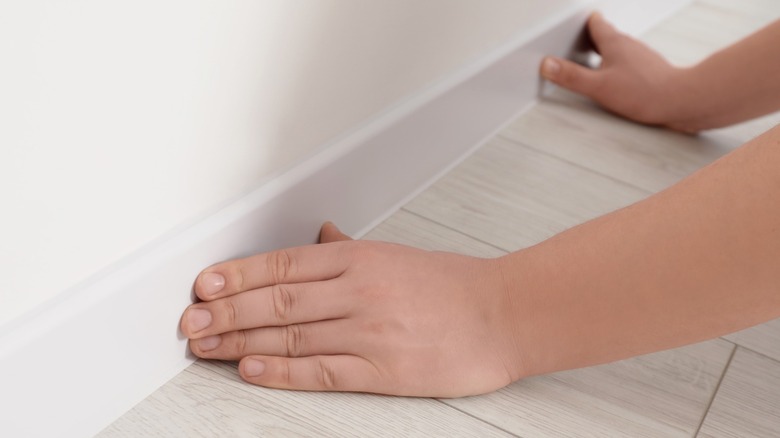The Baseboard Red Flag You Should Always Check Before Buying A House
Buying a house is already stressful enough, but it can quickly become a nightmare when you do a walkthrough in your dream home and see this red flag. Although misshapen or stained baseboards might not seem like a big deal, they often point to past water damage, which is rarely an isolated problem. Whether it's a leaky pipe behind the wall or past flooding that wasn't disclosed, baseboards often hold the first hint that something's wrong beneath the surface.
This is exactly what home inspectors look for first during a visit, because it's subtle and often overlooked by someone not trained to find it. Soft spots, bubbling paint, or baseboards pulling away from the wall may indicate water has been absorbed into the drywall or framing. And while some sellers try to mask these signs with fresh paint, a closer look can reveal the truth. If you're buying a fixer-upper home to renovate, identifying this early will help you plan realistically; it might also allow you to renegotiate your offer. Focus your attention on bathrooms, kitchens, and basements, and always ask about the home's water history if you notice even small red flags along the baseboards.
Why you shouldn't ignore water damaged baseboards
To the untrained eye, baseboards are just trim. But to anyone who's bought a home before, they're one of the biggest tattletales in the room. An essential bit of advice for first-generation homeowners, especially, is to learn how to spot these warning signs early and prevent serious regret later. A baseboard that's warped, separating from the wall, or swollen at the bottom likely indicates water has been where it shouldn't be — and that usually means there's more going on behind the scenes. It could signal a one-time flood, or it could mean bigger issues. Some of the many common problems that can cause baseboard water damage are plumbing leaks, area flooding, high humidity in the home, and window leaks.
Once you've recognized the signs of surface water damage on the home's baseboards, you should take the time to investigate further. Ask the seller or agent direct questions about past water issues, repairs, or insurance claims. Then, during your home inspection, request extra attention be given to areas where the damage was spotted. Even if the damage looks old or minor, water can linger behind walls for months and cause mold, rot, or structural issues you can't see. A moisture meter can also be used during inspections to detect hidden dampness in the walls or trim. If you still have concerns, it's a good idea to bring in a restoration specialist for input. A little caution now can save you from thousands of dollars in unexpected repairs later.

